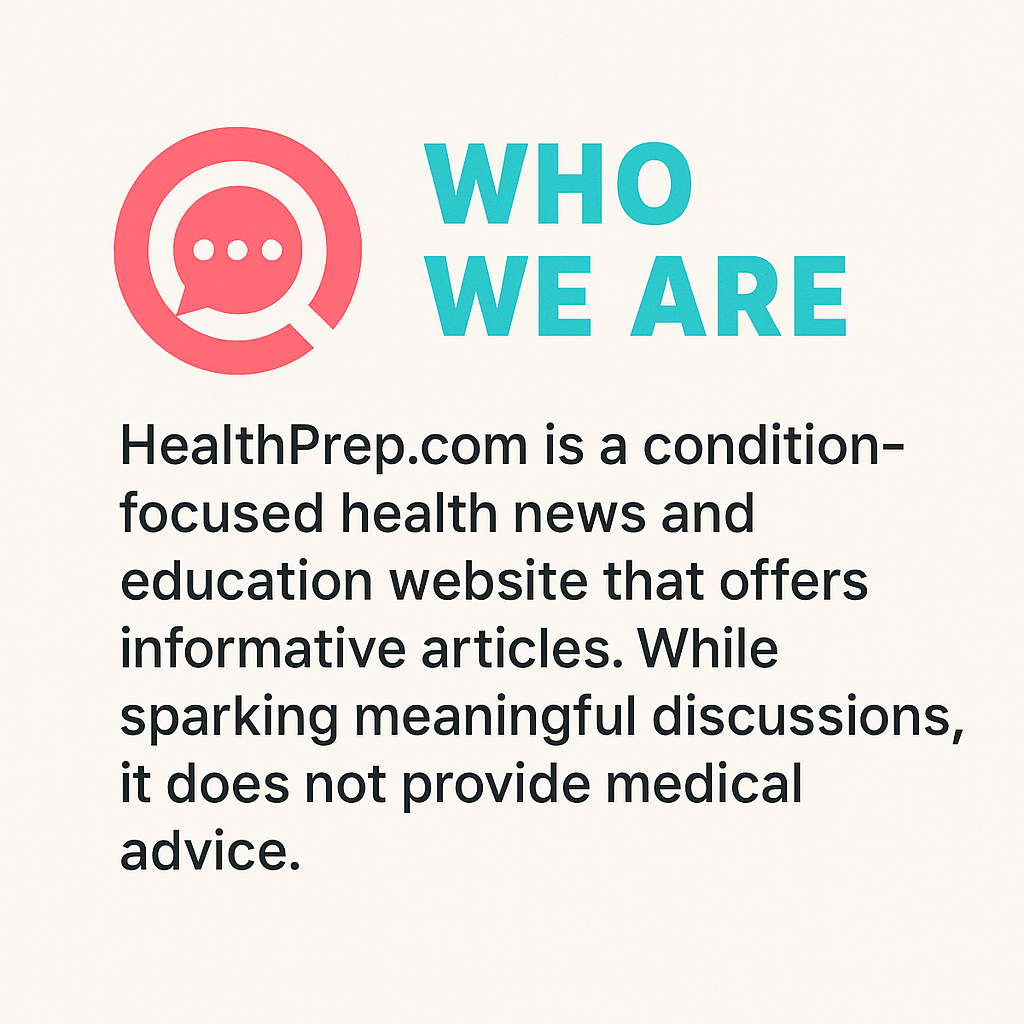24 Unexpected Signs Your Body Might Be Lacking Oxygen
Breathe in, breathe out. Simple, right? But what if your body isn't getting enough of that vital, invisible fuel? Oxygen shortage isn't always dramatic gasping; often, it sends subtle, surprising signals – silent alarm bells easily missed or mistaken for something else. Feeling unusually tired? Brain fog clouding your thoughts? Even strange cravings could be whispers from your body pleading for more O2. Recognizing these nuanced signs early is crucial for addressing potential health issues before they escalate. We've expanded our deep dive to uncover 24 often-overlooked ways your body might be telling you it needs more oxygen. Let's decode these vital messages together and learn to listen when your body speaks.
1. Unusual Fatigue - The Silent Energy Drain

Fatigue is a common experience, often attributed to a busy lifestyle or lack of sleep. However, when fatigue becomes chronic and disproportionate to your level of activity, it may signal an underlying oxygen shortage. Oxygen is essential for the production of adenosine triphosphate (ATP), the energy currency of the cell. When oxygen levels are insufficient, ATP production plummets, leaving you feeling drained and lethargic. This type of fatigue can be persistent and unrelieved by rest, indicating that the body is struggling to meet its energy demands. Understanding this connection can prompt further investigation into your oxygen levels and overall respiratory health.
2. Cognitive Fog - The Clouded Mind

Cognitive fog, or brain fog, is characterized by confusion, forgetfulness, and a lack of mental clarity. While it can be caused by numerous factors, a shortage of oxygen is a significant contributor. The brain consumes approximately 20% of the body's oxygen supply, and even a slight deficiency can impair cognitive function. Neurons, the brain's communication cells, rely heavily on oxygen to transmit signals effectively. When deprived, these signals become sluggish, leading to impaired concentration and memory. Recognizing cognitive fog as a potential indicator of oxygen shortage can lead to early interventions, such as lifestyle changes or medical evaluations, to restore cognitive vitality.
3. Unexplained Shortness of Breath - The Hidden Struggle

Shortness of breath, or dyspnea, is a more obvious sign of oxygen deficiency but can often be misattributed to stress or anxiety. However, if you find yourself unexpectedly breathless during activities that previously posed no challenge, it may be a red flag. The respiratory system is responsible for oxygenating the blood, and any impairment can lead to decreased oxygen levels reaching the tissues. This symptom can manifest suddenly or gradually and may be accompanied by a feeling of tightness in the chest. Identifying this symptom as a potential indicator of oxygen shortage can prompt timely medical attention to prevent further respiratory complications.
4. Frequent Headaches - The Pressure Within

Headaches are a common ailment with a myriad of causes, but frequent or severe headaches can be a subtle sign of oxygen deprivation. The brain is sensitive to changes in oxygen levels, and a shortage can cause blood vessels to dilate, leading to increased intracranial pressure and pain. This type of headache often presents as a dull, persistent ache that can escalate into a migraine. Understanding the link between oxygen levels and headaches can guide individuals to monitor their symptoms and seek medical advice to explore potential respiratory issues or other underlying health conditions.
5. Dizziness and Lightheadedness - The Unsteady World

Dizziness and lightheadedness are sensations that can occur when the brain receives insufficient oxygen. This can happen suddenly, causing a feeling of instability or faintness. The vestibular system, responsible for balance, relies on adequate oxygen to function properly. When deprived, it can lead to disorientation and an increased risk of falls. These symptoms are particularly concerning in older adults, where balance is already a critical issue. Recognizing dizziness and lightheadedness as potential indicators of oxygen shortage can lead to important lifestyle modifications and medical evaluations to ensure safety and well-being.
6. Cold Extremities - The Chilled Warning

Cold hands and feet are often dismissed as a minor discomfort, but they can be a subtle sign of inadequate oxygen supply. The circulatory system is responsible for delivering oxygen-rich blood to the extremities, and when oxygen levels are low, blood flow can be compromised. This results in cold, sometimes numb, fingers and toes. This symptom can be particularly noticeable in colder weather or during periods of inactivity. By understanding the connection between cold extremities and oxygen levels, individuals can take steps to improve circulation through exercise, hydration, and, if necessary, medical intervention.
7. Rapid Heart Rate - The Racing Pulse

A rapid heart rate, or tachycardia, can be an indication that the body is compensating for low oxygen levels. The heart works harder to pump oxygen-depleted blood to the tissues, resulting in an increased pulse. This symptom can occur during physical exertion or at rest and can be accompanied by palpitations or a feeling of fluttering in the chest. Monitoring your heart rate and understanding its relationship with oxygen levels can provide valuable insights into your cardiovascular and respiratory health, prompting lifestyle changes or medical evaluations as needed.
8. Muscle Weakness - The Fading Strength

Muscle weakness can be a subtle yet telling sign of oxygen deficiency. Muscles require oxygen to produce energy and function effectively. When oxygen levels are low, muscle cells struggle to generate the necessary ATP, leading to weakness and fatigue. This can manifest as difficulty performing routine tasks or a general sense of heaviness in the limbs. Recognizing muscle weakness as a potential indicator of oxygen shortage can lead to interventions such as improved nutrition, exercise, and medical assessments to enhance muscle function and overall health.
9. Skin Discoloration - The Visible Marker

Changes in skin color, particularly a bluish tint known as cyanosis, can be a visible sign of oxygen deprivation. This occurs when oxygen levels in the blood are critically low, causing the skin, lips, or nail beds to appear blue or gray. While cyanosis is more apparent in individuals with lighter skin tones, it can still be detected in those with darker skin by examining the lips and nail beds. Understanding this visible marker as a sign of oxygen shortage can prompt immediate medical attention to address potential respiratory or circulatory issues.
10. Restless Sleep - The Nighttime Struggle

Restless sleep, characterized by frequent awakenings or difficulty staying asleep, can be a subtle indicator of oxygen deficiency. During sleep, the body's demand for oxygen decreases, but if oxygen levels are already low, the body may struggle to maintain adequate supply, leading to disrupted sleep patterns. Conditions such as sleep apnea, where breathing is intermittently blocked during sleep, can exacerbate this issue. Recognizing restless sleep as a potential sign of oxygen shortage can lead to sleep studies and interventions to improve sleep quality and overall health.
11. Anxiety and Mood Changes - The Emotional Signal

Anxiety and mood changes can be unexpected signs of oxygen deprivation. The brain's emotional centers are sensitive to oxygen levels, and a deficiency can lead to increased irritability, anxiety, and even depression. This is because oxygen is crucial for neurotransmitter production, which regulates mood and emotional stability. Understanding the connection between oxygen levels and mental health can encourage individuals to seek holistic approaches to well-being, including breathing exercises, stress management, and medical evaluations to ensure optimal oxygenation and emotional balance.
12. Digestive Issues - The Gut Reaction

Digestive issues such as bloating, constipation, or indigestion can be subtle indicators of oxygen shortage. The digestive tract, like all organs, requires oxygen to function effectively. When oxygen levels are low, the digestive process can slow down, leading to discomfort and irregularity. This connection may be overlooked, as digestive issues are often attributed to diet or stress. However, recognizing these symptoms as potential signs of oxygen deprivation can lead to dietary adjustments, increased hydration, and medical consultations to improve digestive health and overall oxygenation.
13. Poor Wound Healing - The Delayed Recovery

Poor wound healing can be a subtle yet significant sign of oxygen deficiency. Oxygen is vital for the repair and regeneration of tissues, and a shortage can impede the body's ability to heal. This can result in wounds that take longer to close or become easily infected. Understanding the role of oxygen in wound healing can encourage individuals to monitor their recovery from injuries and seek medical advice if healing is unusually slow, ensuring that underlying oxygenation issues are addressed to promote optimal recovery.
14. Decreased Physical Performance - The Unseen Limit

Decreased physical performance, such as reduced endurance or strength, can be an indicator of oxygen shortage. Athletes and active individuals may notice a decline in their ability to perform at their usual level, experiencing fatigue more quickly or struggling to complete workouts. This is because muscles require oxygen to sustain prolonged activity, and a deficiency can limit performance. Recognizing this sign can lead to adjustments in training routines, dietary changes, and medical evaluations to optimize oxygen levels and enhance physical capabilities.
15. Frequent Yawning (Even When Not Tired)

Think yawning is just about boredom or sleepiness? Sometimes, excessive yawning is your body's subconscious attempt to gulp in more oxygen. This reflex temporarily increases lung capacity and boosts blood flow, trying to compensate for lower oxygen levels. If you find yourself yawning frequently throughout the day despite adequate rest, it might be a subtle physiological cue that your brain and body are craving a better oxygen supply.
16. Vision Disturbances

Your eyes are incredibly oxygen-hungry. Even mild shortages can cause symptoms like blurred vision, difficulty focusing, temporary tunnel vision, or seeing spots. The retina and optic nerve are highly sensitive to oxygen fluctuations. Experiencing unexplained changes in your vision, particularly if coupled with other signs on this list, could suggest that compromised oxygen delivery is affecting these delicate structures, signaling a need for investigation.
17. Ringing in the Ears (Tinnitus)

That persistent ringing, buzzing, or hissing sound, known as tinnitus, isn't always just noise. It can sometimes be linked to insufficient oxygen reaching the sensitive hair cells within your inner ear. These cells require a constant, rich supply of oxygen to function correctly. Disruptions in blood flow or overall oxygen levels might trigger or worsen tinnitus, serving as an auditory hint of potential underlying oxygenation issues.
18. Increased Susceptibility to Infections

Your immune system is a complex network that demands significant energy and oxygen to operate effectively. Key immune cells rely on adequate oxygen to patrol your body and neutralize pathogens. If you seem to be catching every bug going around or find infections lingering longer than usual, chronically low oxygen levels might be subtly weakening your defenses, making your body a more inviting target for illness.
19. Unusual Cravings (Pica)

While often associated with nutrient deficiencies like iron-deficiency anemia (which itself impairs oxygen transport), craving non-food substances such as ice, dirt, or clay (pica) can occasionally be an indirect, albeit strange, signal related to the body's struggle for adequate oxygenation. The exact link isn't fully clear, but persistent, bizarre cravings warrant medical attention, as they might point towards underlying issues affecting oxygen delivery.
20. Night Sweats

Waking up unexpectedly drenched in sweat, unrelated to your room's temperature? This can sometimes occur when the body experiences stress due to low oxygen levels during sleep, particularly in conditions like sleep apnea where breathing repeatedly stops. This oxygen deprivation triggers a stress response, activating the sympathetic nervous system and leading to sweating as your body works harder to cope. Persistent night sweats deserve investigation.
21. Loss of Appetite

Consistently feeling uninterested in food can sometimes stem from low oxygen levels slowing down your overall metabolism, including digestive processes. Your body might subtly try to conserve energy by reducing appetite when it's struggling to fuel essential functions. Furthermore, the digestive organs themselves need sufficient oxygen to work efficiently. An unexplained, persistent lack of appetite could be an indirect sign of compromised oxygen availability.
22. Clumsiness or Poor Coordination

Precise movements and good coordination depend heavily on the brain and nervous system receiving a steady oxygen supply. If you suddenly notice you're fumbling, dropping things more often, stumbling, or struggling with tasks requiring dexterity, it might reflect subtle neurological impairment. Insufficient oxygen reaching the brain areas responsible for motor control can manifest as increased clumsiness – a physical whisper for more O2.
23. Pale or Grayish Complexion

Beyond the distinct blue tint of cyanosis (#9), a more subtle indicator of chronically lower oxygen levels can be a generally pale, ashen, or slightly grayish appearance to the skin. This can reflect reduced oxygen saturation in the blood circulating near the surface and potentially poorer peripheral circulation as the body prioritizes vital organs. It's a less dramatic visual cue but can suggest ongoing oxygenation challenges.
24. Difficulty Regulating Body Temperature

Feeling persistently cold, even when others are comfortable, or having unusual trouble warming up? Oxygen is crucial for metabolism – the process that generates body heat. When oxygen supply is limited, your metabolic rate can slow down, making it harder for your body to maintain its core temperature effectively. This constant chilliness might be your internal furnace signaling it needs more oxygen fuel.
The Breath of Awareness

Understanding the subtle ways your body reveals an oxygen shortage is crucial for maintaining optimal health and well-being. These signs, often dismissed or misinterpreted, can provide early warnings of potential respiratory or circulatory issues. By listening to your body and recognizing these indicators, you can take proactive steps to address oxygen deficiencies through lifestyle changes, medical interventions, and holistic approaches. Ultimately, this awareness empowers you to maintain a balanced and healthy life, ensuring that your body's silent cries for oxygen are heard and addressed before they escalate into more serious health concerns.
